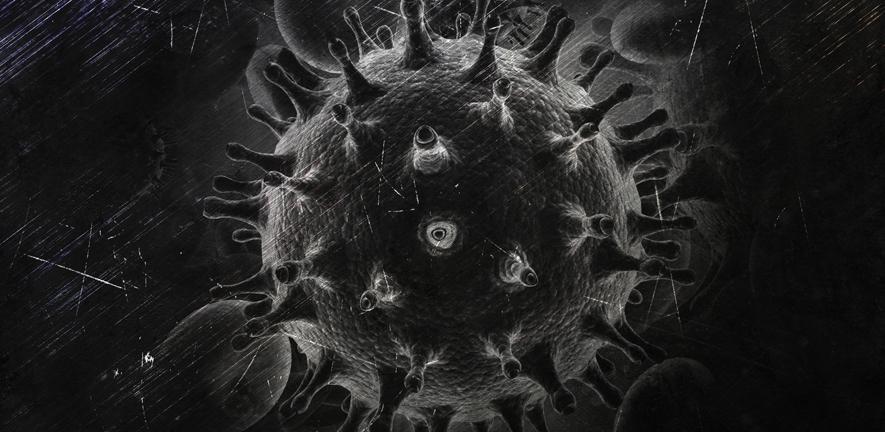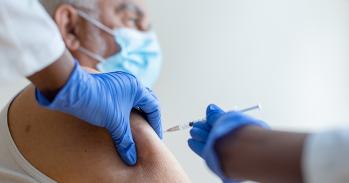
A second person has experienced sustained remission from HIV-1 after ceasing treatment, according to a study published today in Nature.
A second person has experienced sustained remission from HIV-1 after ceasing treatment, according to a study published today in Nature.
At the moment the only way to treat HIV is with medications that suppress the virus, which people need to take for their entire lives, posing a particular challenge in developing countries
Ravindra Gupta
The case report, carried out by researchers at UCL and Imperial College London, together with teams at the University of Cambridge and the University of Oxford, comes ten years after the first such case, known as the ‘Berlin Patient.’
Both patients were treated with stem cell transplants from donors carrying a genetic mutation that prevents expression of an HIV receptor CCR5.
The subject of the new study has been in remission for 18 months after his antiretroviral therapy (ARV) was discontinued. The authors say it is too early to say with certainty that he has been cured of HIV, and that they will continue to monitor his condition.
“At the moment the only way to treat HIV is with medications that suppress the virus, which people need to take for their entire lives, posing a particular challenge in developing countries,” said the study’s lead author, Professor Ravindra Gupta from the University of Cambridge, who led the study while at UCL.
“Finding a way to eliminate the virus entirely is an urgent global priority, but is particularly difficult because the virus integrates into the white blood cells of its host.”
According to the World Health Organization, there were approximately 36.9 million people worldwide living with HIV/AIDS in 2017 and only 59% of these are receiving ARV. Drug-resistant HIV is a growing concern. Almost one million people die annually from HIV-related causes.
The report describes a male patient in the UK, who prefers to remain anonymous, and was diagnosed with HIV infection in 2003 and on antiretroviral therapy since 2012.
Later in 2012, he was diagnosed with advanced Hodgkin’s Lymphoma. In addition to chemotherapy, in 2016 he underwent a haematopoietic stem cell transplant from a donor with two copies of the genetic mutation (or ‘allele’) that prevents expression of CCR5.
CCR5 is the most commonly used receptor by HIV-1, the most common and most harmful type of HIV. People who have two mutated copies of the CCR5 allele are resistant to the HIV-1 virus strain that uses this receptor, as the virus cannot enter host cells.
Chemotherapy can be effective against HIV as it kills cells that are dividing. Replacing immune cells with those that don’t have the CCR5 receptor appears to be key in preventing HIV from rebounding after the treatment.
The transplant was relatively uncomplicated, but with some side effects including mild graft-versus-host disease, a complication of transplants wherein the donor immune cells attack the recipient’s immune cells.
The patient remained on ARV for 16 months after the transplant, at which point the clinical team and the patient decided to interrupt ARV therapy to test if the patient was truly in HIV-1 remission.
Regular testing confirmed that the patient’s viral load remained undetectable, and he has been in remission for 18 months since ceasing ARV therapy (35 months post-transplant). The patient’s immune cells remain unable to express the CCR5 receptor.
Dr Hoi Ping Mok, and Dr Fanny Salasc from the Department of Medicine at the University of Cambridge tested for virus that is ‘latent’ and may not be found by conventional lab assays. The researchers are part of Professor Andrew Lever’s lab, which has developed a highly sensitive assay for latent virus.
“This is the most reliable assay there is to demonstrate that there really are no hidden reservoirs of HIV that might be temporarily ‘sleeping’ and might reactivate at a later date,” said Professor Lever. “Our Cambridge lab is unique in the UK in being able to carry out this assay.”
The patient is only the second person documented to be in sustained remission without ARV. The first, the Berlin Patient, also received a stem cell transplant from a donor with two of the CCR5 alleles, but to treat leukaemia. Notable differences were that the Berlin Patient was given two transplants and underwent total body irradiation, while the UK patient received just one transplant and less intensive chemotherapy.
Both patients experienced mild graft-versus-host disease, which may also have played a role in the loss of HIV-infected cells.
“By achieving remission in a second patient using a similar approach, we have shown that the Berlin Patient was not an anomaly, and that it really was the treatment approaches that eliminated HIV in these two people,” said Professor Gupta.
The researchers caution that the approach is not appropriate as a standard HIV treatment due to the toxicity of chemotherapy, but it offers hope for new treatment strategies that might eliminate HIV altogether.
“We need to understand if we could knock out this receptor in people with HIV, which may be possible with gene therapy,” said Professor Gupta.
“While it is too early to say with certainty that our patient is now cured of HIV, and doctors will continue to monitor his condition, the apparent success of haematopoietic stem cell transplantation offers hope in the search for a long-awaited cure for HIV/AIDS,” said Professor Eduardo Olavarria from Imperial College Healthcare NHS Trust and Imperial College London.
The research was funded by Wellcome, the Medical Research Council, the Foundation for AIDS Research, and National Institute for Health Research (NIHR) Biomedical Research Centres at University College London Hospitals, Oxford, Cambridge and Imperial.
The research team is presenting the findings today at the annual Conference on Retroviruses and Opportunistic Infections (CROI) in Seattle.
Reference
Gupta, R et al. HIV-1 remission following CCR5Δ32/Δ32 haematopoietic stem cell transplantation. Nature; 5 March 2019; DOI: 10.1038/s41586-019-1027-4
Adapted from a press release from UCL

The text in this work is licensed under a Creative Commons Attribution 4.0 International License. Images, including our videos, are Copyright ©University of Cambridge and licensors/contributors as identified. All rights reserved. We make our image and video content available in a number of ways – as here, on our main website under its Terms and conditions, and on a range of channels including social media that permit your use and sharing of our content under their respective Terms.




